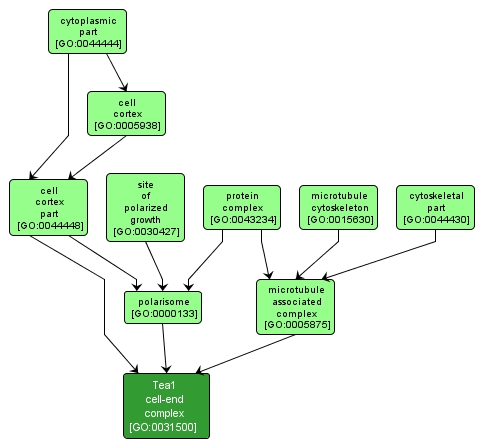GO TERM SUMMARY
|
| Name: |
Tea1 cell-end complex |
| Acc: |
GO:0031500 |
| Aspect: |
Cellular Component |
| Desc: |
A high molecular weight complex characterized in S. pombe containing the cell-end anchoring protein Tea1. This complex is transported to the cell ends by microtubules and is involved in bipolar growth and the maintennce of normal cell polarity. |
|

|
INTERACTIVE GO GRAPH
|














